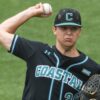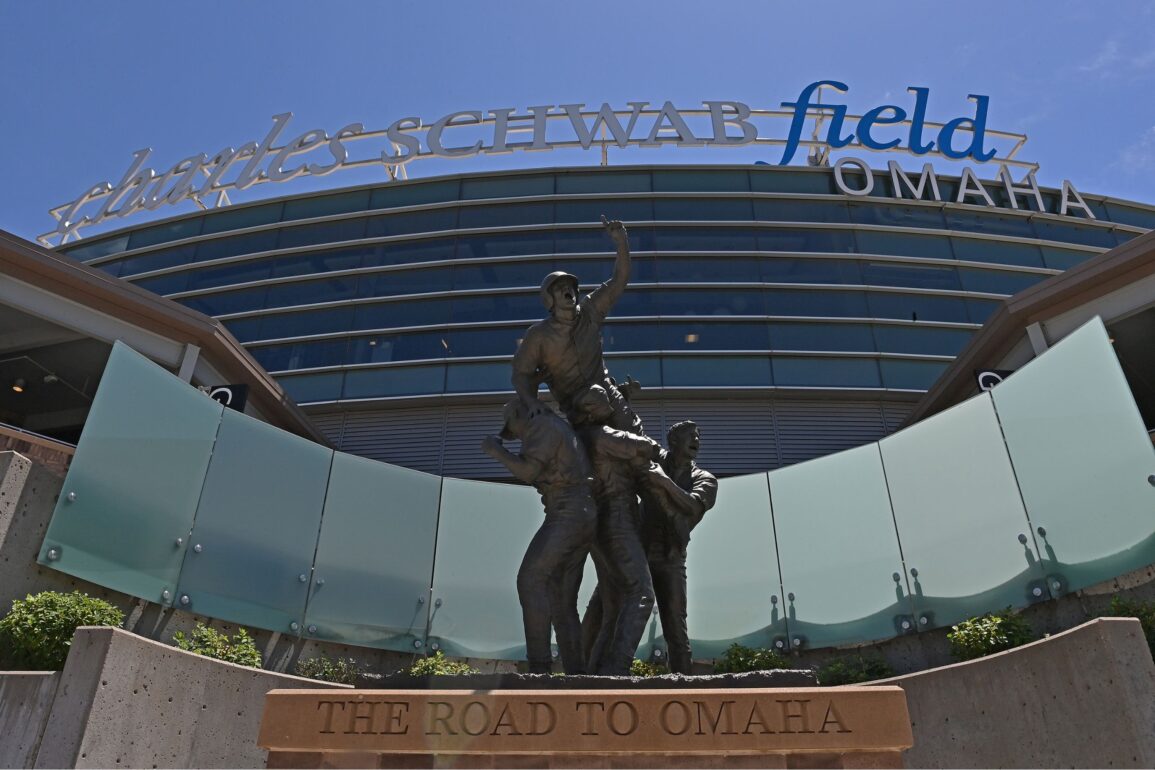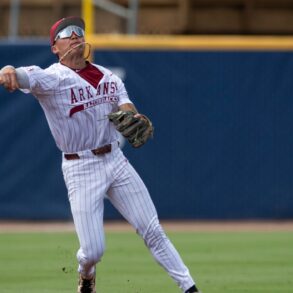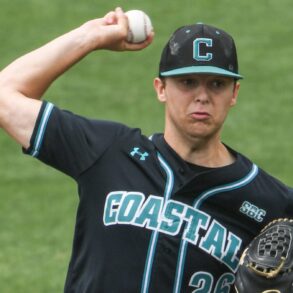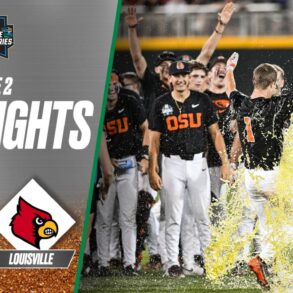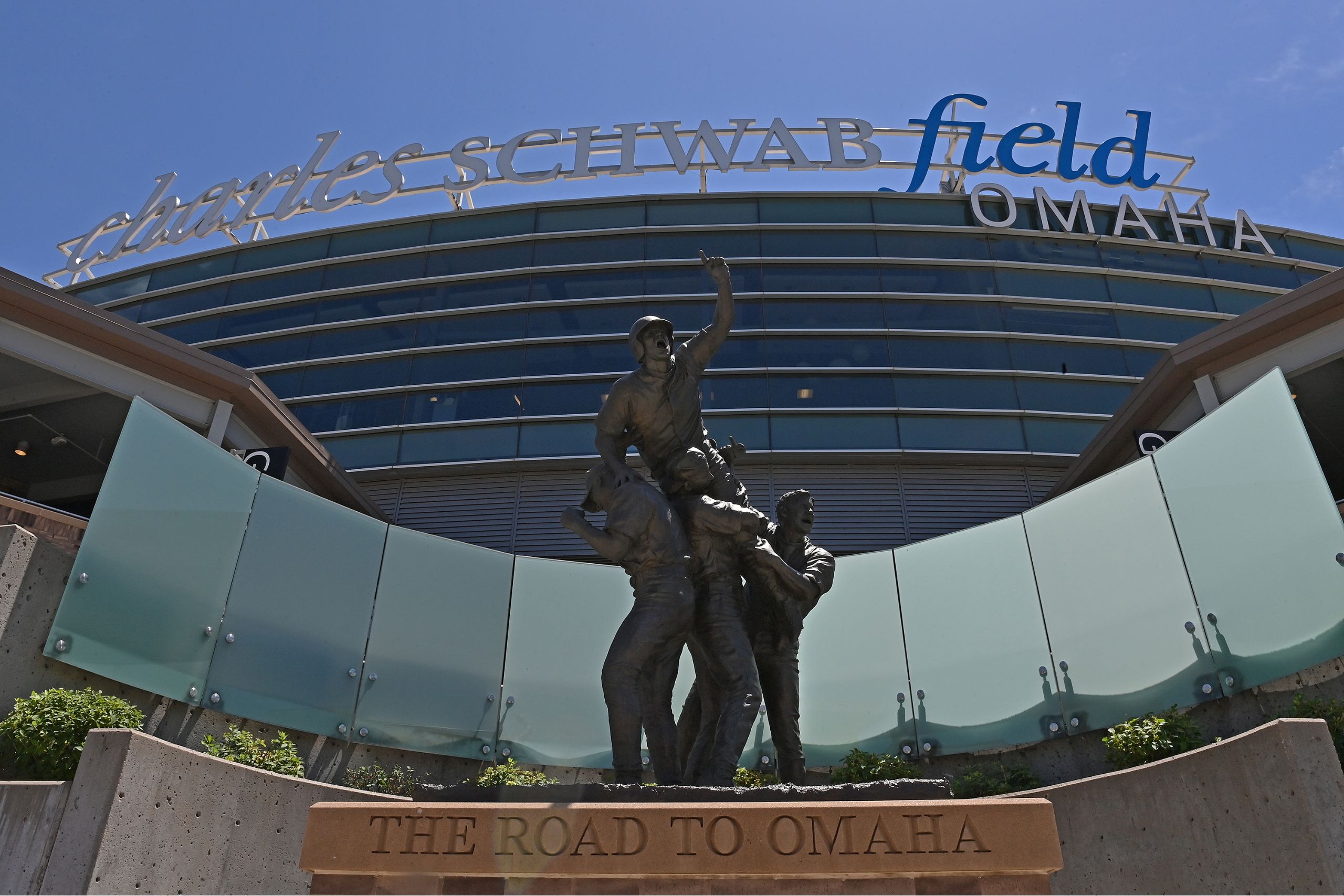
Image credit:
(Photo by Peter Aiken/Getty Images)
Kevin Schnall was a student for more than two decades. The dugout was his classroom and Gary Gilmore, the acclaimed professor.
The lessons were plentiful throughout their extensive time together at Coastal Carolina, where Gilmore coached Schnall in the late 1990s before hiring him as an assistant in 2001. With the exception of a three-year stretch from 2013 to 2015, the two remained tethered—until this spring, when Gilmore retired and Schnall took over.
Roster construction, game management and skill development were among the courses taught.
But it was Gilmore’s conviction in building a team—not a collection of talent—that stuck with Schnall most.
“You have to put together the best team,” Schnall said. “Sometimes money doesn’t always buy that.”
That belief, old-school in its simplicity, feels almost radical in 2025. Because everywhere else in college baseball, the model has shifted. Power has consolidated. Resources have pooled in the deepest pockets. And each year, the selection committee has left mid-majors with less room at the table.
This season, just four at-large bids went to non-power conferences, marking the fewest in the super regional era. It was as if the sport’s patented parity had all but vanished. And yet? Omaha tells a different story.
Teams from six different conferences reached the College World Series this year. Coastal Carolina is one of them. So is Murray State, a four-seed that had never even reached a super regional before this postseason. UCLA, Oregon State and Arizona gave the West Coast its loudest voice in decades. Louisville, picked to finish 10th in the ACC, clawed its way back to the game’s biggest stage.
A year ago, it felt like the sport had tipped for good. The SEC and ACC split a field that pointed toward power-conference dominance. As one coach put it at the time: “It’s a money game now.” And for many programs, it still is.
But if the tournament selection process sent a message that smaller programs no longer belong, this year’s postseason has gone a long way to prove that message doesn’t always hold up in June.
“You can keep calling us the underdog,” Murray State infielder Carson Garner said. “We like that. We like when people doubt us.”
The Racers are the embodiment of everything this tournament has stood for. They are group of transfers, junior college products and late bloomers, all coached by Dan Skirka, a former Division II assistant who nearly lost two of his key players—Jonathan Hogart and Dustin Mercer—to retirement before they ever got to campus.
“I was close to packing it up,” Hogart said. “Then Skirk called.”
They won anyway.
Coastal Carolina didn’t just return to Omaha—it roared in on a 23-game win streak. And it did so with a roster built not on NIL dollars or high-profile transfers, but on trust, fit and cohesion. Schnall, in his first year as head coach, leaned on the same blueprint Gilmore once used to beat the giants of the sport.
Now the Chanticleers are just a few wins from doing it again.
“This pitching staff has guts,” Schnall said. “We’ve had weekends where the other team scores four runs total in a series. That’s how you win. Doesn’t matter what league you’re in.”
The common thread among this year’s surprise teams isn’t just humility—it’s identity. They know who they are.
In a landscape increasingly shaped by money and metrics, that sense of self is more than just a feel-good story—it’s a lifeline. For fans, coaches and players outside the power structure, this June is proof that belief still has a place. That a team built on culture, not cash, can still crash the gates. That the sport hasn’t fully lost what once made it so compelling: the idea that anyone, from anywhere, can still win it all.
UCLA, led by John Savage, plays clean, fundamental baseball and has been successful thanks to the contributions of homegrown players. Of the Bruins’ 40-man roster, 37 were recruited out of high school, a serious rarity now.
“We’re not a portal operation,” Savage said. “But we’ve played 115 Division I games together. That matters.”
This is also the strongest showing for the West Coast in more than 30 years. Not since the Pac-12 did it in 1988 had the region put three teams into the College World Series.
For years, the narrative said the West had lost its edge, that talent had shifted East, that elite players would rather cash checks in the SEC than grind it out in California. But the numbers say otherwise. Arizona won the Big 12 Tournament and powered its way through regionals on the road. Oregon State stayed true to itself—long bus rides, big culture, no shortcuts—and won as a conference independent anyway. UCLA finally broke back through for the first time in more than a decade.
“It’s been a long time since we’ve been here,” said Bruins outfielder Dean West. “We want to show what West Coast baseball still has to offer.”
That’s what this College World Series feels like at its core: not a changing of the guard, but a rejection of inevitability. A reminder that this sport, for all its modern mechanisms—NIL, the portal, multi-million-dollar stadiums—is still defined by the 90 feet that separate each base and decided, often, by teams that simply play better together.
“We don’t really try to buy into a lot of the outside noise,” Mercer said. “Because no matter whether there’s 10 people in the stands cheering for us or 20,000, we love each other. We’re doing it for each other. We’re not doing it for any external factor.”
That doesn’t mean parity is fixed. Mid-majors are still at a disadvantage in the committee room. The numbers don’t lie. But Omaha isn’t about numbers. It never has been. It’s about moments. Belief. Teams.
This year, the classroom has a chance to beat the cash register. The little guys will try to make sure that lesson sticks.
This post was originally published on this site be sure to check out more of their content.



